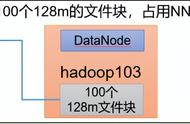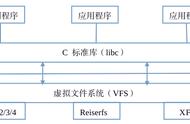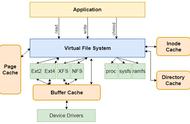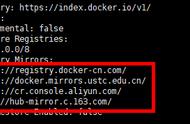
为什么 Linux 内核的文件系统类型那么多,都能挂载上呢?为什么系统里可以直接 mount 其他文件系统呢?甚至能把 windows 下的文件夹挂载到 windows 上,为什么 Linux 的虚拟文件系统这么强大?这得益于它的数据结构设计得十分精妙。好像听过,Linux 有什么解决不了的?加一层。

虚拟文件系统,简称 VFS(Virtual Filesystem),是一个内核软件层。
VFS 的作用概括地讲,VFS 有两个作用:
- 处理与 Unix 标准文件系统相关的所有系统调用
- 为各种文件系统提供一个通用的接口
以下列出以下常见的文件系统类型,本文暂时不对其进行详细分析。
- 磁盘文件系统
ext2,ext3,··· - 网络文件系统类型
nfs,smbfs,··· - 特殊文件系统
tmpfs,ramfs,··· - 伪文件系统
procfs,sysfs,···
VFS 设计的初衷就是要支持所有的文件系统,所以它的设计思想其实就是以面向对象的方式,设计一个通用的文件模型,出于效率考虑,VFS 还是 C 语言写的。
在通用文件系统模型中,每个目录也被当作一个文件,可以包含若干文件和其他的子目录。因此,Linux 有一句经典的话:一切皆文件。
Linux VFS 抽象出 4 种类型的数据结构,实现将不同类型的文件系统挂载到目录结构中。
超级块对象对于磁盘类文件系统,超级块是存放在磁盘上的文件系统控制块,里面存放已安装文件系统的有关信息,换句话说,一个超级块描述了一个具体的文件系统信息,里面的信息十分重要,也叫元数据,与普通的文件数据相比,元数据丢失会损坏整个文件系统,导致无法挂载之类的问题。当然,不仅超级块,inode上也有很多元数据。
struct super_block {
struct list_head s_list; // 超级快链表指针
dev_t s_dev; // 设备表示符
unsigned char s_blocksize_bits; //以位为单位的块的大小
unsigned long s_blocksize; //以字节为单位的块大小
loff_t s_maxbytes; //文件大小的上限
struct file_system_type *s_type; //指向文件系统的file_system_type 数据结构的指针
const struct super_operations *s_op; //超级块方法
const struct dquot_operations *dq_op; //磁盘限额方法
const struct quotactl_ops *s_qcop; //限额控制方法
const struct export_operations *s_export_op; //导出方法
unsigned long s_flags; //登录标志
unsigned long s_magic; //文件系统的魔术字
struct dentry *s_root; //目录登录点
struct rw_semaphore s_umount; //卸载信号量
int s_count; //超级块引用计数
atomic_t s_active; //活动引用记数
#ifdef CONFIG_SECURITY
void *s_security; //安全模块
#endif
const struct xattr_handler **s_xattr;
struct list_head s_inodes; //把所有索引对象链接在一起,存放的是头结点
struct hlist_bl_head s_anon; //匿名目录项
struct list_head s_mounts; /* list of mounts; _not_ for fs use */
struct block_device *s_bdev; //相关的块设备
struct backing_dev_info *s_bdi;
struct mtd_info *s_mtd;
struct hlist_node s_instances; //该类型文件系统
unsigned int s_quota_types; /* Bitmask of supported quota types */
struct quota_info s_dquot;//限额相关选项
struct sb_writers s_writers;
char s_id[32]; /* Informational name */
u8 s_uuid[16]; /* UUID */
void *s_fs_info; /* Filesystem private info */
unsigned int s_max_links;
fmode_t s_mode;
u32 s_time_gran;
struct mutex s_vfs_rename_mutex; /* Kludge */
char *s_subtype;
char __rcu *s_options;
const struct dentry_operations *s_d_op; /* default d_op for dentries */
int cleancache_poolid;
struct shrinker s_shrink; /* per-sb shrinker handle */
atomic_long_t s_remove_count;
int s_readonly_remount;
struct workqueue_struct *s_dio_done_wq;
struct hlist_head s_pins;
struct list_lru s_dentry_lru ____cacheline_aligned_in_smp;
struct list_lru s_inode_lru ____cacheline_aligned_in_smp;
struct rcu_head rcu;
int s_stack_depth;
};
索引节点对象(inode)
索引节点存放关于具体文件的一般信息。对于磁盘类文件系统,索引节点也是存放在磁盘上的文件控制块。每个索引节点都有一个索引节点号,这个节点号唯一地标识了文件系统中的文件。
struct inode {
umode_t i_mode; //访问权限控制
unsigned short i_opflags;
kuid_t i_uid; //使用者的id
kgid_t i_gid; //使用组id
unsigned int i_flags; //文件系统标志
#ifdef CONFIG_FS_POSIX_ACL
struct posix_acl *i_acl;
struct posix_acl *i_default_acl;
#endif
const struct inode_operations *i_op; //指向索引结点操作结构体的指针
struct super_block *i_sb; //指向inode所属文件系统的超级块的指针
struct address_space *i_mapping; //相关的地址映射
#ifdef CONFIG_SECURITY
void *i_security; //安全模块
#endif
unsigned long i_ino; //索引结点号。通过ls -i命令可以查看文件的索引节点号
union {
const unsigned int i_nlink; //硬链接数
unsigned int __i_nlink;
};
dev_t i_rdev; //实际设备标识符号
loff_t i_size; //以字节为单位
struct timespec i_atime; //最后访问时间
struct timespec i_mtime; //最后修改时间
struct timespec i_ctime; //最后改变时间
spinlock_t i_lock; /* i_blocks, i_bytes, maybe i_size */
unsigned short i_bytes; //使用的字节数
unsigned int i_blkbits; 以位为单位的块大小
blkcnt_t i_blocks; //文件的块数
#ifdef __NEED_I_SIZE_ORDERED
seqcount_t i_size_seqcount;
#endif
unsigned long i_state; //状态标志
struct mutex i_mutex;
unsigned long dirtied_when; //首次修改时间
unsigned long dirtied_time_when;
struct hlist_node i_hash; //散列表
struct list_head i_wb_list; /* backing dev IO list */
struct list_head i_lru; /* inode LRU list */
struct list_head i_sb_list; //链接一个文件系统中所有inode的链表
union {
struct hlist_head i_dentry; //目录项链表
struct rcu_head i_rcu;
};
u64 i_version; //版本号
atomic_t i_count; //引用计数
atomic_t i_dio_count;
atomic_t i_writecount; //写者计数
#ifdef CONFIG_IMA
atomic_t i_readcount; /* struct files open RO */
#endif
const struct file_operations *i_fop; /* former ->i_op->default_file_ops */
struct file_lock_context *i_flctx;
struct address_space i_data; //设备地址映射
struct list_head i_devices; //块设备链表
union {
struct pipe_inode_info *i_pipe; //管道信息
struct block_device *i_bdev; //块设备
struct cdev *i_cdev; //字符设备
};
__u32 i_generation; //索引节点版本号
#ifdef CONFIG_FSNOTIFY
__u32 i_fsnotify_mask; /* all events this inode cares about */
struct hlist_head i_fsnotify_marks;
#endif
void *i_private; /* fs or device private pointer */
};
目录项对象(dentry)
存放 dentry 与对应文件链接的有关信息,每个 dentry 代表路径中的一个特定部分,每个磁盘类文件系统以自己的方式将目录项信息存放在磁盘上。
struct dentry {
/* RCU lookup touched fields */
unsigned int d_flags; /* protected by d_lock */
seqcount_t d_seq; /* per dentry seqlock */
struct hlist_bl_node d_hash; /* lookup hash list */
struct dentry *d_parent; /* parent directory */
struct qstr d_name;
struct inode *d_inode; /* Where the name belongs to - NULL is negative */
unsigned char d_iname[DNAME_INLINE_LEN]; /* small names */
/* Ref lookup also touches following */
struct lockref d_lockref; /* per-dentry lock and refcount */
const struct dentry_operations *d_op;
struct super_block *d_sb; /* The root of the dentry tree */
unsigned long d_time; /* used by d_revalidate */
void *d_fsdata; /* fs-specific data */
struct list_head d_lru; /* LRU list */
struct list_head d_child; /* child of parent list */
struct list_head d_subdirs; /* our children */
/*
* d_alias and d_rcu can share memory
*/
union {
struct hlist_node d_alias; /* inode alias list */
struct rcu_head d_rcu;
} d_u;
};
文件对象(file)
存放被打开文件与进程间交互的信息,这类信息仅当进程访问文件期间存放在内存中。
struct file {
union {
struct llist_node fu_llist; //每个文件系统中被打开的文件都会形成一个双链表
struct rcu_head fu_rcuhead;
} f_u;
struct path f_path;
struct inode *f_inode; /* cached value */
const struct file_operations *f_op; //指向文件操作表的指针
spinlock_t f_lock;
atomic_long_t f_count; //文件对象的使用计数
unsigned int f_flags; //打开文件时所指定的标志
fmode_t f_mode; //文件的访问模式
struct mutex f_pos_lock;
loff_t f_pos; //文件当前的位移量
struct fown_struct f_owner;
const struct cred *f_cred;
struct file_ra_state f_ra; //预读状态
u64 f_version; //版本号
#ifdef CONFIG_SECURITY
void *f_security; //安全模块
#endif
/* needed for tty driver, and maybe others */
void *private_data;
#ifdef CONFIG_EPOLL
/* Used by fs/eventpoll.c to link all the hooks to this file */
struct list_head f_ep_links;
struct list_head f_tfile_llink;
#endif /* #ifdef CONFIG_EPOLL */
struct address_space *f_mapping; //页缓存映射
} __attribute__((aligned(4))); /* lest something weird decides that 2 is OK */
struct file_handle {
__u32 handle_bytes;
int handle_type;
/* file identifier */
unsigned char f_handle[0];
};
数据结构组织关系图















